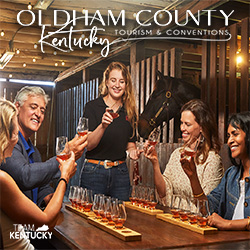Arlington, Virginia, is right next door to D.C. — just cross the Potomac and you’re there — but it’s a world away from the U.S. capital’s high prices and long drive times.
Travel planners will love Arlington for its wealth of reasonably priced lodging and food options, while groups will appreciate that it doesn’t take long to get almost anywhere. Thanks to Arlington’s compact footprint, which is only 26 miles square, it’s usually possible to travel from one landmark to the next inside of 10 minutes.
But it’s Arlington’s showstopping mix of both blockbuster and hidden gem historical sites that make it a must for groups. Read on for the best Arlington attractions both powerful and profound — and nearly entirely free.
Arlington National Cemetery
With more than 3 million people paying their respects at Arlington National Cemetery annually, this final resting place for some 400,000 veterans and their dependents remains the city’s most-visited attraction. But despite its popularity, tram tours make visiting a snap for groups, according to Portia Conerly, director of sales for the Arlington Convention and Visitors Service.
“I always tell folks, ‘If you’re feeling like Superman, you can definitely walk it,’” she said. “But it’s over 639 acres, so I usually recommend the tram. It runs every 20 minutes daily, and it makes five stops, including President John F. Kennedy’s gravesite with the Eternal Flame, which is always very moving. The tour is about an hour long, or they can hop on/hop off it.”
Conerly also suggests group visitors see the legendary Changing of the Guard at the Tomb of the Unknown Soldier, which is located on the steps of the cemetery’s Memorial Amphitheater. The elaborate ceremony takes place every half hour in the warm weather months, and every hour from October 1 through March 31. Leaders may want to arrange for their groups to lay a wreath at the tomb, a special experience that can be booked online six months in advance. For groups that want to linger longer on the grounds, private tram tours may also be extended in half-hour increments.
The Military Women’s Memorial
Located in Arlington National Cemetery, the Military Women’s Memorial is often overlooked, receiving just 200,000 visitors a year.
“And why is that?” Conerly asked. “It’s beautiful! It honors the commitment, contributions and experiences of the over 3 million women who have served in the United States military, dating back from the Revolutionary War to today. It’s the only major national memorial in the U.S. to honor all women who have served this country, so it’s definitely worth a visit for groups.”
The memorial, which debuted in 1997, is housed in a stunning neoclassical building featuring sweeping views of the Washington Monument and a reflecting pool with a 200-jet fountain. But the facility promises to really wow visitors with its education center exhibits. Filled with ephemera detailing the history of American women in the military, it includes many objects donated by servicewomen themselves. Dedicated in 2020, “The Pledge,” a life-sized bronze sculpture of a military dog handler and her canine, is the first monument in the nation’s capital to honor all women of the U.S. military. Like the cemetery itself, the memorial is free to enter.
The National 9/11 Pentagon Memorial
While large groups may no longer tour the Pentagon, the free National 9/11 Pentagon Memorial is open 24/7 for group travelers to visit. Many chose to stop by after a big afternoon exploring D.C. museums or right before or following dinner. Dedicated seven years to the day after the 9/11 attacks, the memorial honors the 184 lives lost when hijackers flew a commercial jetliner into a corner of the Pentagon. The two-acre site, which sits adjacent to where the plane hit, is graced with 184 cantilevered benches. Each is inscribed with the name of a victim and contains a pool of water that reflects light as darkness falls.
Simple but undeniably impactful, the memorial will gain a much-anticipated Visitor Education Center in the summer of 2028. Plans are for the facility to explore not only the events of 9/11 but also the response that followed. Conerly notes that in the meantime, docents are usually on-site at peak times to speak to group visitors. (Private group tours are not available at this time.)
“These docents usually are either survivors or have some sort of connection to one of the 184 that lost their lives,” she said. “So, they are telling you what happened through their eyes. Visiting the memorial is a totally difference experience with a docent.”
The DEA Museum
Another free Arlington attraction, the Drug Enforcement Administration Museum and Visitors Center premiered its first exhibit 25 years ago, expanding and renovating its public spaces in 2019. Today, it offers groups a look at the history and science of substance misuse, while also honoring the service of DEA agents in this country and abroad. State-of-the-art interactive displays, including sleek touchscreens and compelling hands-on exhibits, combine with some 5,000 artifacts to detail America’s relationship to narcotics. From the funky green platform shoes an undercover agent wore while infiltrating a cocaine ring in the 1970s, to the bamboo booby trap used by traffickers to protect Thai drug crops, the DEA Museum is fascinating and thought-provoking.
It’s also conveniently located right across from the Fashion Centre at Pentagon City, Conerly notes.
“A lot of groups will go to the mall’s food court and then cross the street to the DEA Museum,” she said. “And leaders can arrange for a special agent to come and talk to the group. Groups just love it! So, the agent will come, along with his dog, and talk about what a day in his life looks like, his whole history, how he ended up doing this, that kind of thing. Groups can do the whole thing in about an hour.”









